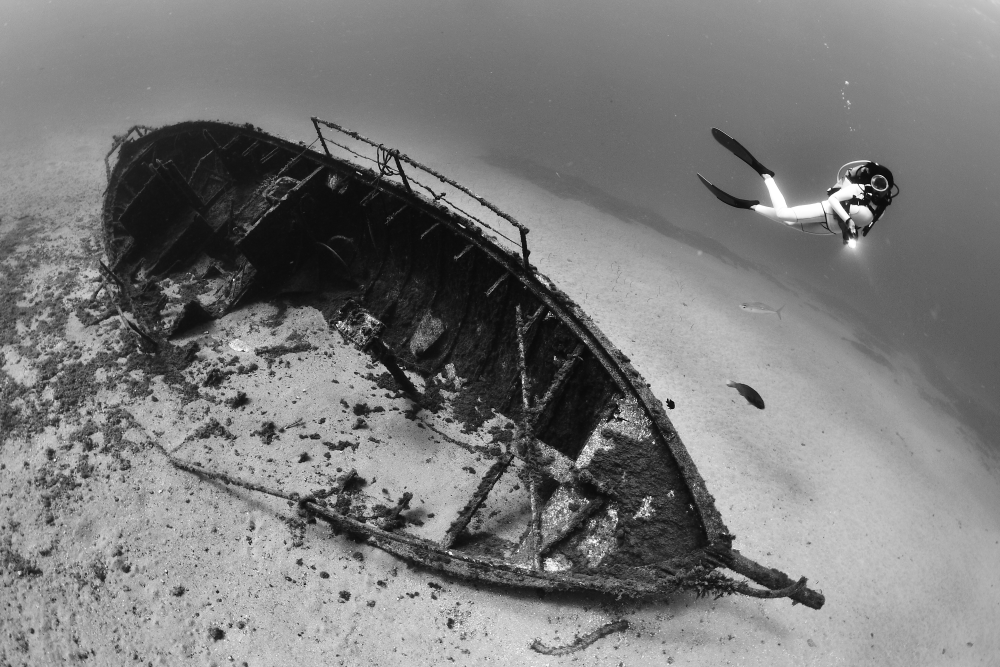Scubashooters will give a presentation of the winners of the CMAS world championship in underwater photo and video held at Tenerife, Spain in the period 17. – 22. September 2019. The competition was arranged by the Spanish and the Canarian diving federations in cooperation with local diving operators. The dive spots were all placed at the south coast of Tenerife.
The idea is to give the photographers some space to explain their thoughts and ideas behind their work. All placed entries can be seen at https://www.cmas.org/events/15-20.10.2019-underwater-photo-world-championship-tenerife-canarias-spain
A full report from the competition can be read at https://wetpixel.com/articles/report-cmas-world-underwater-photography-championship1
Winner Underwater Video
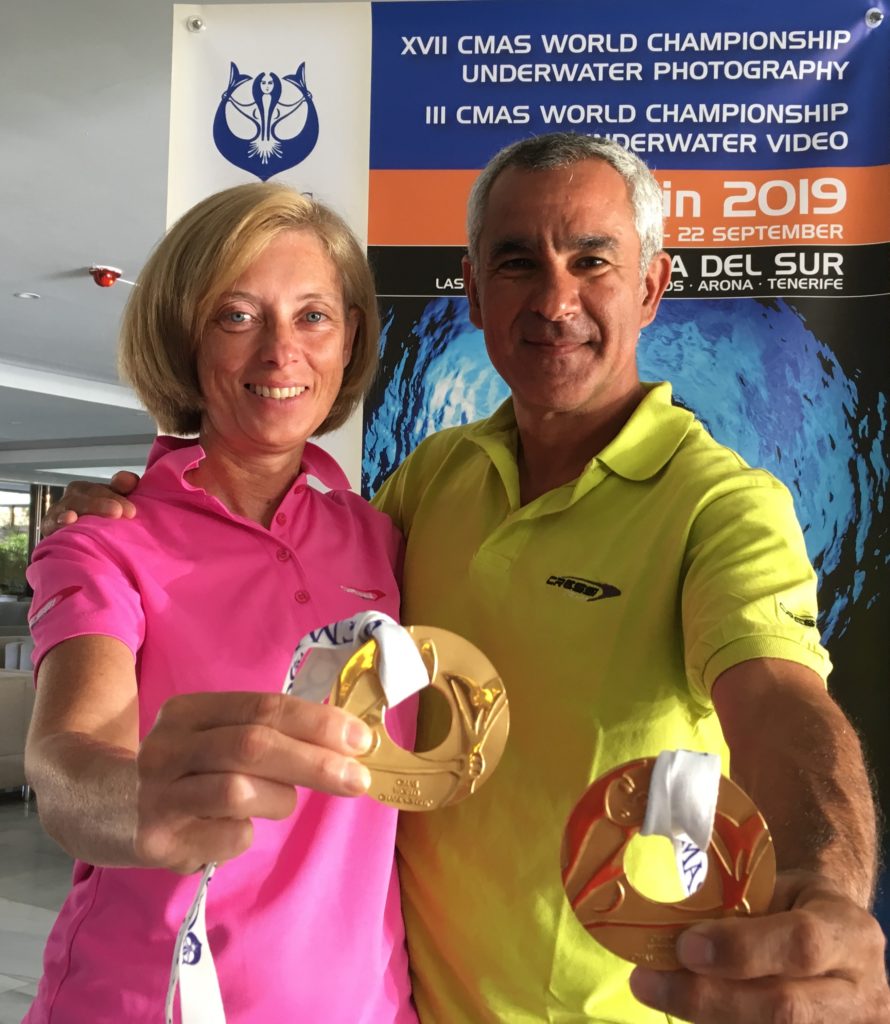
The winning team was Jorge Candán (photographer) and Pilar Barros (assistant) from Spain with the video «The return». In the video championship there were eight placed videos, where 4 out of 5 jury members gave the winning video the highest score. The main part of the videos in the competition had a documentary style and focused on environmental problems in the sea. The winning video was differing form the other videos by a much higher level of editing and visual style. The story is about the humans leaving the planet for 1112 years, finding an ocean in ballance. Scubashooters find the video poetic with a high level of quality and a worthy winner of the CMAS world championship.
To see more of Jorge´s work, visit http://www.jjcandan.com/
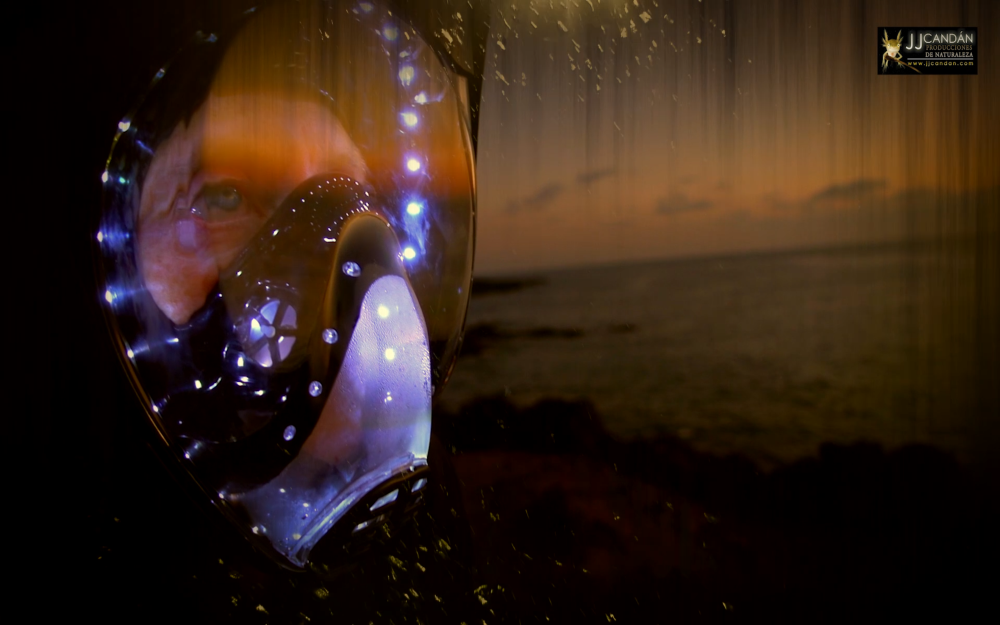
The video can be watched at https://vimeo.com/361641213
The intro photo of «The Return»
The photographers own words
We were clear that we wanted to tell a story about conservation and respect for the oceans, without using common arguments. We wanted to tell it in an original way, a different point of view.
The chosen theme was the flight of humanity from a devastated planet earth. Centuries later, when man wanted to return to his planet, already recovered, he found that to avoid his return, all the earth had been invaded by the oceans. It had become the «OCEAN PLANET».
I spent many days working on the script, I wanted it to be poetic. When we initially wrote it in Spanish, we were afraid of the English translation, which is always a difficult step and the essence of the message and the rhythm can be lost.
The editing work and the resources we used were well practiced. We had tried different possibilities so that potential change of rules, that could be changed in the technical meeting the day before the championship, could not spoil the assembly.
The limitations in these types of contests are very large, with just eight hours to edit, including the capture of card images. The final video is always delivered with many things without doing, without adjusting, things that in a job outside a contest you would not let go. Another limitation is that the recording is reduced to 4 dives of 90 minutes, but with 12-liter bottles, having to leave 30bar of security and without allowing decompression, the reality is that we can barely be 60min in the background.
In the dives we had clear species to record, but as we all know, animals do not understand schedules, time was limited, and some were where they should be, others, such as chuchos, who were every day during training, not They let themselves be seen.
We had prepared it thoroughly and were very happy with the result of the work and the contest.
Winners Underwater Photo
Category 1 – Fish
The winner in category «Fish» was team Rui Bernardo (photographer) and Sonia Bernardo (assistant / model).
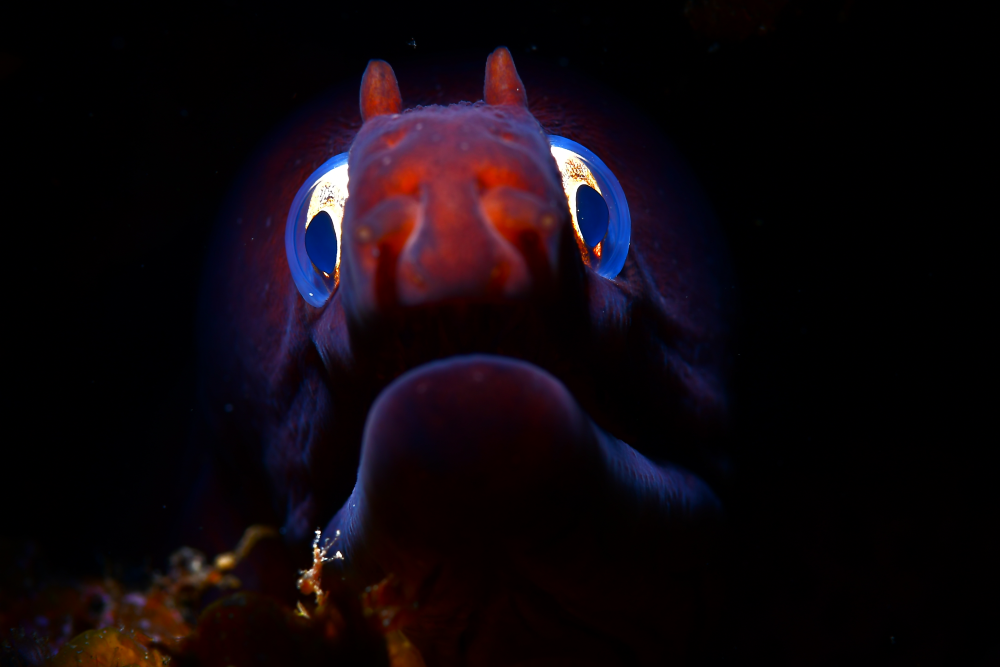
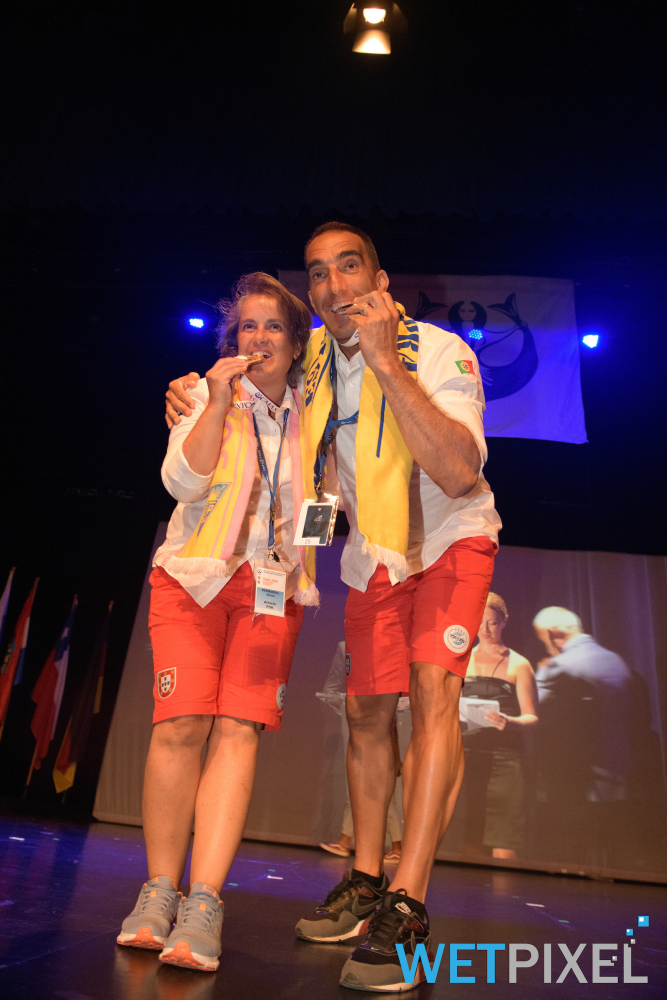
The winning photo was shot at “Las Rosas (La Atlántida)” in Las Galletas. In this category, there was a great variety of different styles and techniques. In contrast to the other images, this one was a very close-up traditional fish portrait with a very good selective light on the face.
The photographers own words
In the second competition day and on the second dive we had our collection done and did the last dive just to enjoy diving. During the dive, we saw this very small moray eel looking out of a small hole towards the divers who where searching for motives. None of the others saw this small creature. Sonia spotted it and call me, very silent, and made our signal for “snoot photography”. We took some pictures horizontal, other vertical and the moray eel let us do the pictures we wanted until it disappeared. In fact, we thought that none of the pictures where superior to one we already had, but after seeing it in the computer, we where like “wow!”
During the “photo session” Sonia moved the snoot around the head of the moray eel to get different shades and contour of the head. Is a second, the moray eel looked into the camera, and that was this exact moment.
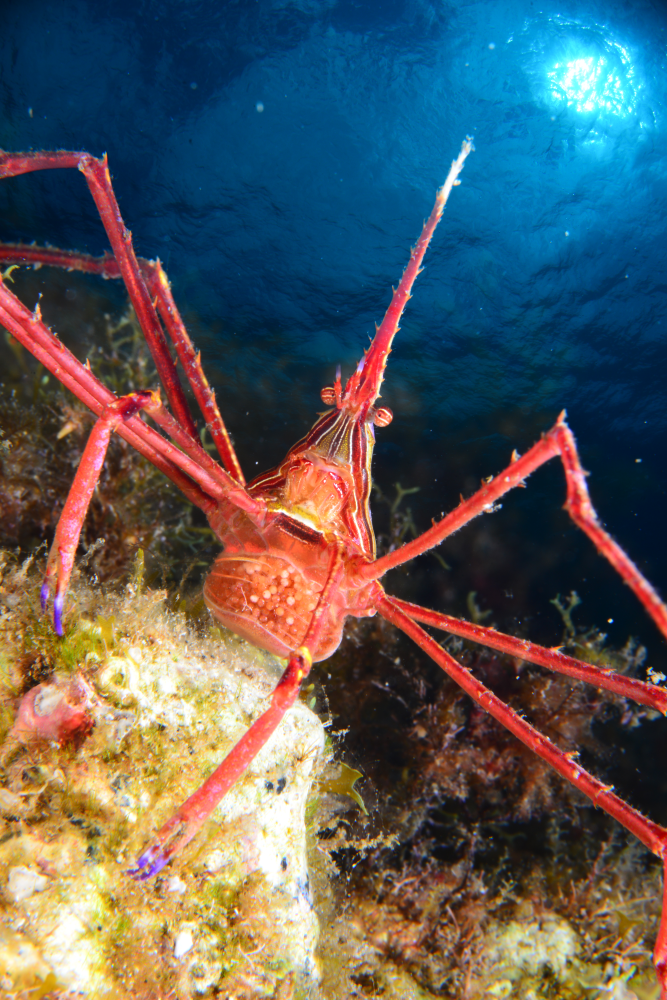
Category 2 – Close-up
The winner in the close-up category is team Julien Carpels (photographer and Martine Ruoppollo (assistant/model) from France.
The winning photo was shot at Yellow mountain dive site. In this category, the crabs like the winner was one of the most used subjects. In the wining photo, Julien Carpels & Martine Ruppollo managed to give the carb a different composition by shooting from below and add some sun surface as a background. This technique made toe photo different enough from the others and enough punch in composition, contrasts and colors to be a winner. More of Juliens photos can be seen at https://www.instagram.com/juliencarpels_uwphotography/
The photographers own words

It was very important for me to give a high visual impact to close up photography. The subject must be detached from the background and we had to be efficient with a very short time to succeed with an image of strong impact. To succeed with my goal, I prefer to drop the use of snoot as it is very time-consuming. The technique of low-angle shooting gives a dimension to the subject while the bacgoround remain natural and untouched by strobe light. The subject is highlighted by the strobes and it is in a dominant position. In this world championship, the close up theme was a real challenge, and I am very happy that we managed to meet the challenge. It was important for me to make an image of the underwater fauna in its natural environment, to obtain an aesthetic image while visualizing the life environment. This aesthetics of the image should not be done in the absence of this approach, I explain, some techniques of shooting isolating the subject of any support, sanitize the image and do not evoke for me, the sea, the ocean, but shooting in the studio. I think it’s important to keep that in mind.
In the end, this underwater video and photo world championship was a very pleasant moment of meeting and sharing. It was a very good experience and i congratulates all the participants for giving the best of themselves in a fair play atmosphere.
3. Theme category – Cartilaginous fish
The winner of the special theme category, «Cartilaginous fish», was team Taner Atilgan (photographer) and Caglar Atilgan (assistant / model) from Turkey.
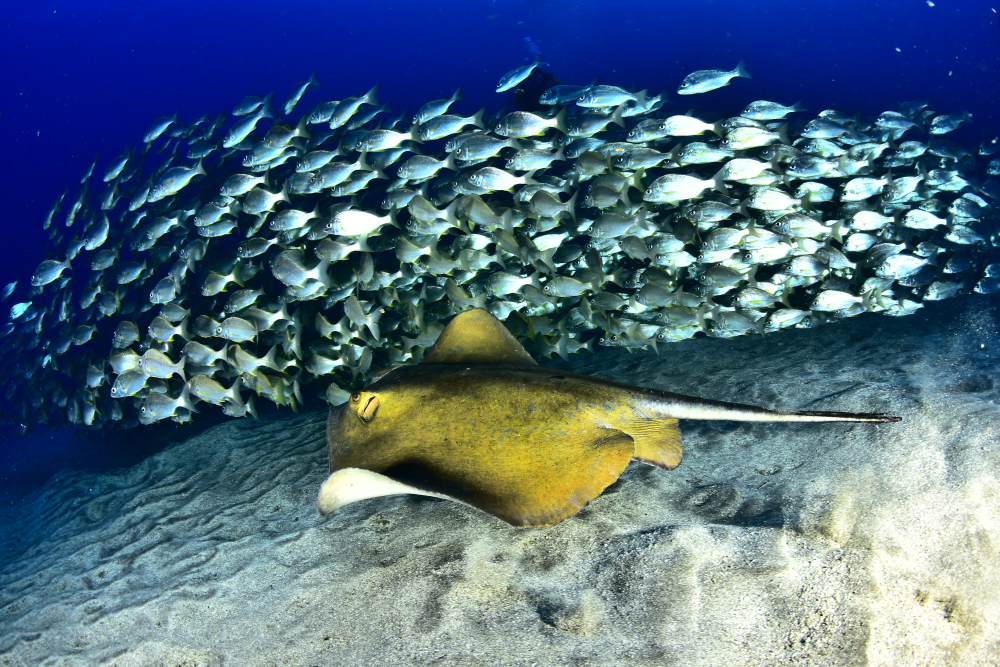
The winning photo was shot at Punta de la Luna, Las Galletas. In this category, the main style was photographing the rays from a birds perspective. The area was quite crowded with photographers and in some periods there was too much particles in the water to make a shot with strobes. Not all of the competitors did even have the chance to get a photo of the theme subject. Taner & Caglar Atilgan´s photo differ very much from the main group by adding some colors and by having a school of fish making the image stronger than the average photo.
The photographers own words
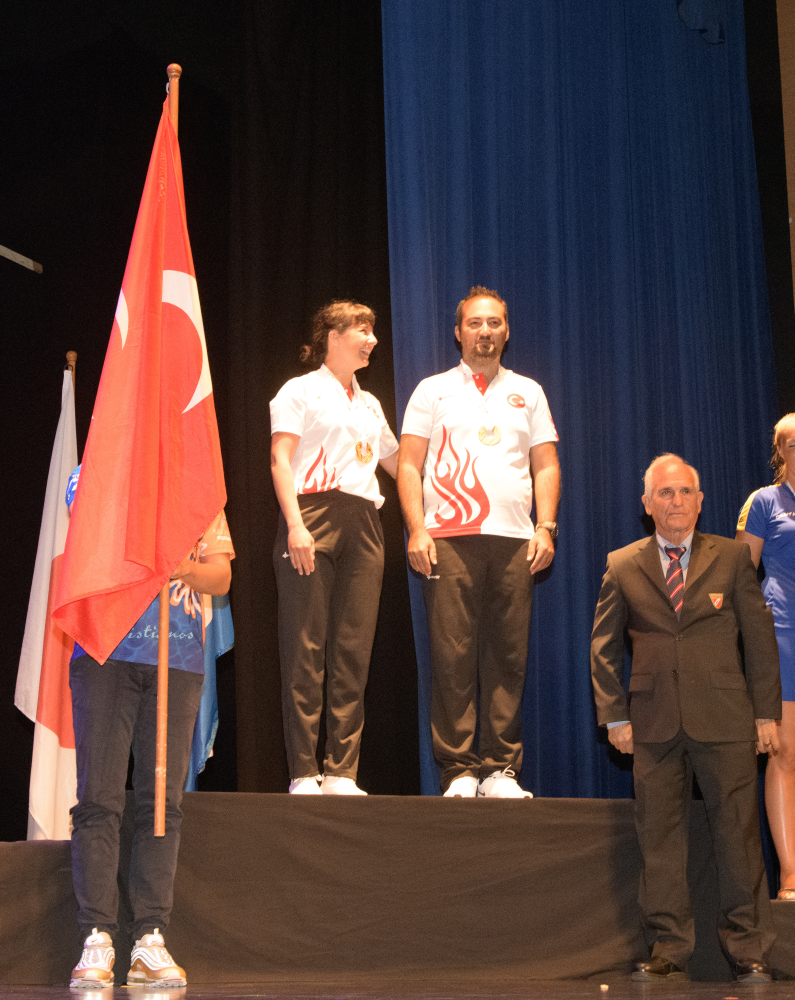
Theme category at CMAS Underwater Photography World Championships is mostly chosen from the subjects which are special for the competition location and can be easily found by all the divers. During the training dives, we’ve noticed that there were some real challenges for photographing the rays: At one dive site you can only see them in the morning dive, and at the other dive site they rarely come close to you. After the timing of the dive sites were determined, we realized that we could have the chance to photograph them at only one dive site.
One of our observations during the trainings was that the rays were often interacting with the school of fish which was located at 23 meters of depth. At the beginning of the competition dive at that site, we directly went to the location of the school and started to wait for the rays while taking pictures. When there was only 5 minutes of bottom time remaining, my wife, Caglar, showed me a ray approaching towards us. My first attempt was unsuccessful due to the distance between the ray and myself. At the second attempt, I’ve aligned myself for a face-to-face picture, however the ray just turned away to chase the fish school and I’ve taken the shot immediately. Afterwards, it was the end of our bottom time and we had to ascend accordingly. It was a kind of gamble, but we are so happy that our one shot was enough to be awarded with the gold medal by the judges.
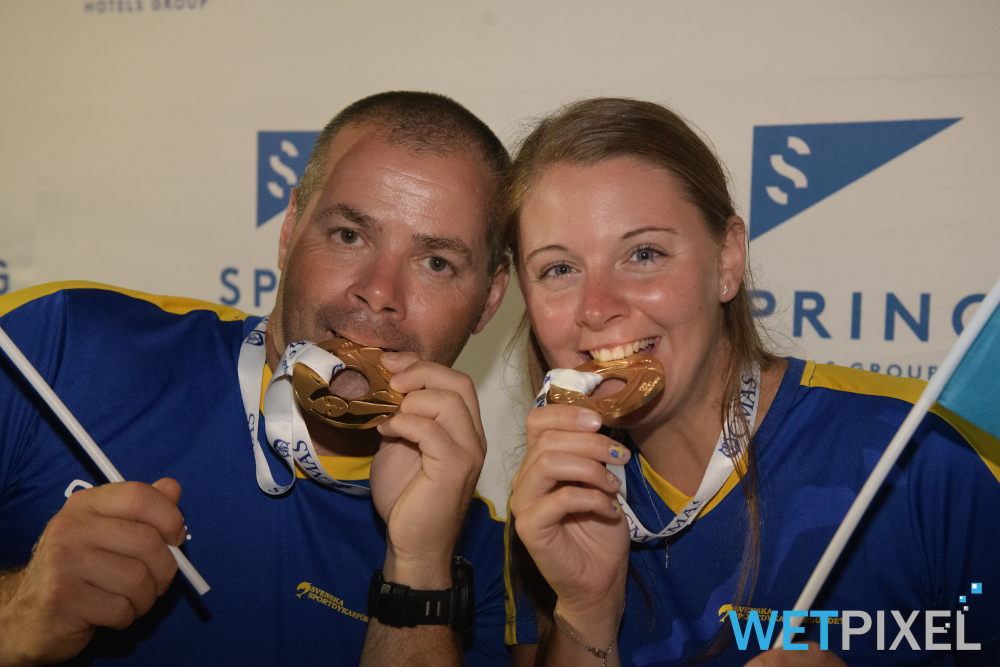
4. Wide angle
The winner in category «Wide Angle» is team Martin Handel (photographer) and Sara Karlsson (assistant / model) from Sweden. The winning photo was shot at Los Obispos (El bufadero) – Los Cristianos. In this cathegory, eight out of top fifteen selection of the same motive – a turtle. In contrast to the other turtles, this one was so close to the dome p
ort that I think it might have crashed into the photographers camera. I know the photographer considered using this photo in the close-up cathegory, but luckily he didn’t. The photo is well exposed and composed and is absolutely different from all the other wide angles.
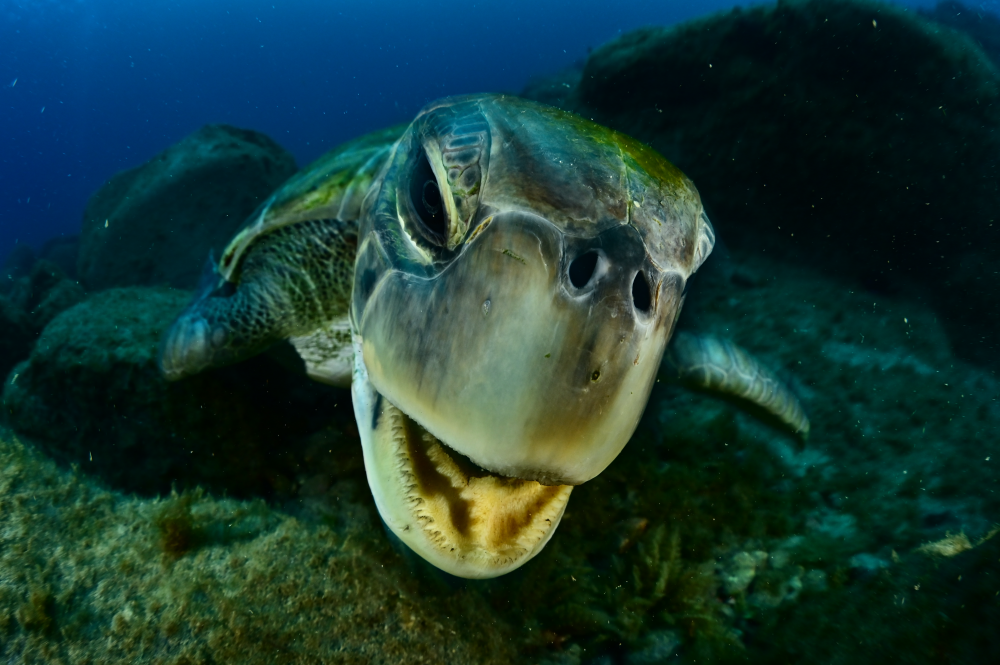
The photographers own words
This photo was taken during the last of four competition dives at the world championship in Tenerife. On this dive site there where three turtles swimming around, but there were too many divers around them, so it was impossible to get a good photo. After a couple attempts to get a clean picture with them, we decided to give up this motive. Me and my assistant started to swim away from the crowd but about an hour into the dive we happened upon this lone turtle lying on the seabed. I approached her slowly, as I didn’t want to scare her away, and after about 10 minutes she turned around and started to inspect her reflection in my camera. Suddenly she decides to attack her mirror self, which led to this great picture. We later found out her name was Anita, and though she wasn’t very friendly, I am grateful to her. I have never, during all of my encounters with turtles, seen them attack their reflection with their mouth open.
5. Wide angle with model
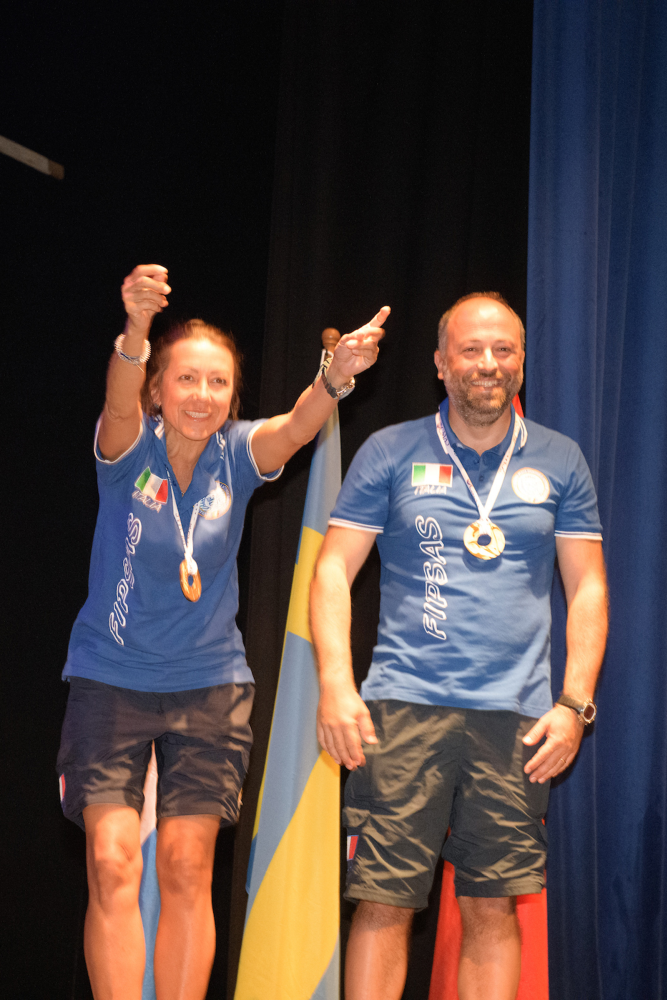
The winner of this category is team Guglielmo Cicerchia (photographer) and Iwona Molsa (model) from Italy.
The winning photo was shot at Punta de la Luna, Las Galletas. It is one out of three photos on the top 15 selection of the same motive – a shipwreck with a diver. Differing from most of the other photos in the category, Guglielmo Cicerchia chose to use a high contrast B&W style, sell exposed with details in all parts. It is easy to see that assistant Iwona Molsa is well skilled in her work as a model. The image give a feeling of «an old school explorer» both in tones and composition, while the image quality tell us it is a new photo.
The photographers own words
During the test dives I had chosen to photograph the wreck with the sun behind me and the keel in the foreground with the model in the background, once the race fields were drawn, however, I would have had to dive in the morning and I would have had the sun in front . I therefore had to change the shot. Being the wreck at a depth of about 20 meters and not being able to stay much at that altitude I decided not to enter the water immediately at the start, but to wait about 15/20 min hoping that the wreck was free. Once out on the wreck there was already another photographer who fortunately soon went away giving me the chance to calmly find the right frame with the right proportions to the model.
